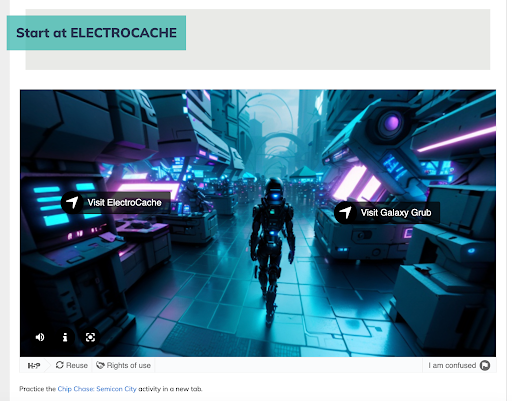
To prepare the next generation of semiconductor innovators, Boise State University and Idaho Digital Learning Alliance (IDLA) have launched a groundbreaking course—Chip, Chip, Hooray! —designed specifically for eighth to tenth-grade students across Idaho. The initiative is a collaboration between Boise State’s Institute for Microelectronics Education and Research (MER) and IDLA. As the first of three planned courses, it is part of a broader national initiative spurred by the CHIPS and Science Act of 2022, aimed at empowering young minds to engage in the cutting-edge industries of semiconductors and microelectronics.
The course, introduced during the fall semester of the 2024-2025 school year, saw an enrollment nearly 200% higher than typical new courses.
“A brand-new class will get around 30-50 enrollments,” said Jolene Del Re, director of curriculum at IDLA. “We started with over 120 students, so this is a great success.”
Students represent all regions of Idaho, from New Meadows to Montpelier, indicating a significant step forward in semiconductor education in the state.
Distinctive, Gamified Approach to Learning
Chip, Chip, Hooray! is not just another science course. To engage young learners, the instructional content has been gamified, making complex topics more accessible and exciting. Lisa Kabel, content development specialist at IDLA, explained that students explore concepts like basic circuitry design and the applications of semiconductors in an interactive, game-like environment. The course also introduces students to professional pathways in the semiconductor industry, offering a glimpse into potential future careers.
Eric Schneider, an encore fellow for MER and one of the primary content developers, emphasized the course’s goal to ignite students’ curiosity about semiconductors. Schneider hopes the course will “help set students on a path of lifelong learning about semiconductors, or other fields that have potential for solid earnings and career satisfaction.”
A Collaborative Idaho Initiative
While the course’s subject matter is omnipresent, Chip, Chip, Hooray! remains uniquely Idahoan. It was developed through collaboration between local educators and industry leaders, including Idaho’s own Micron Technology, a key player in the semiconductor industry.
“Micron Technology is proud to collaborate with Boise State University and IDLA on Chip, Chip, Hooray!” said Robert Simmons, director of Micron Gives North America. “Both Micron and the Micron Foundation are dedicated to fostering STEM education and empowering young minds with the knowledge and skills needed for future careers in the semiconductor industry.”
“This is the first course of its kind,” Kabel said, emphasizing the importance of local industry experts who reviewed the content to ensure accuracy and relevance.
The development team traveled across the state to explore how semiconductor technology is utilized in various sectors, such as agriculture and engineering. Kabel explained that “Idaho students can move into any industry and be better prepared for success if they have some background in semiconductors.” This knowledge is increasingly essential for future careers in farming, auto mechanics, and traditional tech industries.
Additionally, it was Idaho students who chose the name of the course. At the Rapid Educational Prototyping (REP4) summer program, an initiative at Boise State that focuses on challenge-based learning experiences, high school students came together to create the witty title.
Boise State’s Senior Advisor for Government Relations, Peter Risse, described how excited the students were with the assignment.
“Following a noisy debate,” said Risse, “they settled on ‘Chip, Chip, Hooray!’”
The Background and Broader Vision
The idea for Chip, Chip, Hooray! originated in 2023 with Professor and Director of Cyber Operations and Resilience Program Sin Ming Loo of Boise State’s Electrical and Computer Engineering department. His vision to integrate microelectronic education into K-12 classrooms led to the successful acquisition of the Semiconductor for All grant.
Boise State received $5 million from the Idaho Workforce Development Council, which the university matched, for a total of $10 million. This funding supports not only Chip, Chip, Hooray! but also future courses that will push the boundaries of microelectronic education in Idaho.
“What we’re trying to do is give kids, any kids in Idaho an opportunity to learn something about this topic,” Loo said.
The next course in the series, set for release in spring 2025, will align with Boise State’s Introduction to Electrical and Computer Engineering course (ECE 180) and be offered as dual credit. This will allow high school students to earn university credits in engineering. All three classes aim to provide unique educational opportunities for students, including those from rural areas.
Dan Lamborn, executive director of the MER Institute, explained “this initial course is critical for our students in Idaho. There is a statewide opportunity to grow our STEM efforts and an expertise in a challenging but exciting industry.”
Idaho students are positioned to become the innovators of tomorrow’s semiconductor industry, starting with courses like these.
“It’s important for students to know they can work in this high-tech industry while still staying part of rural Idaho,” explained Del Re. “We want to keep our talent here.”